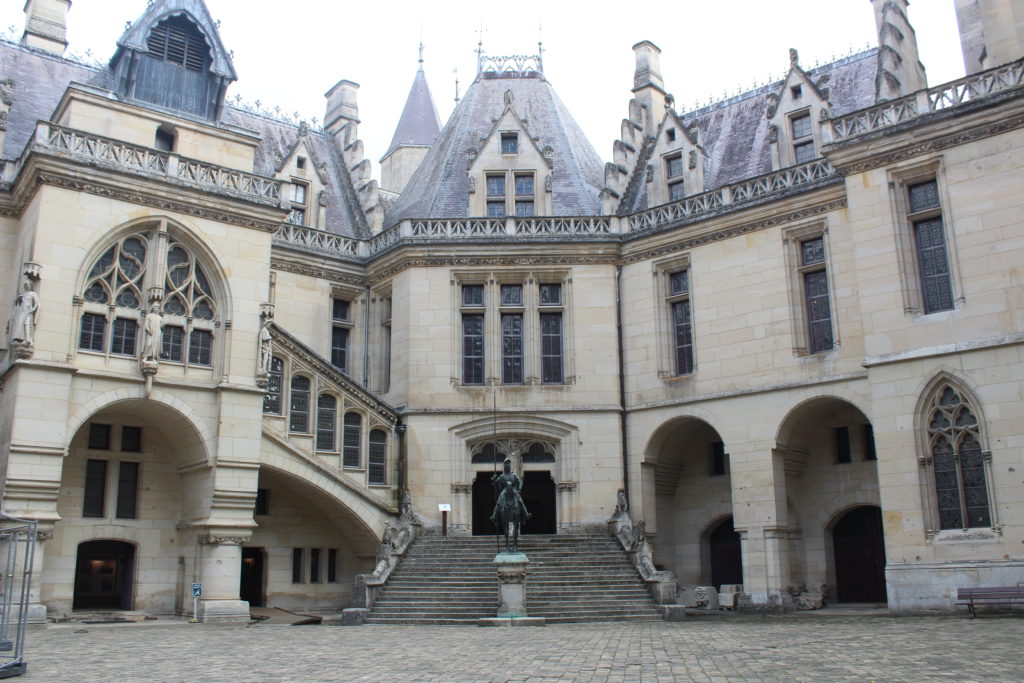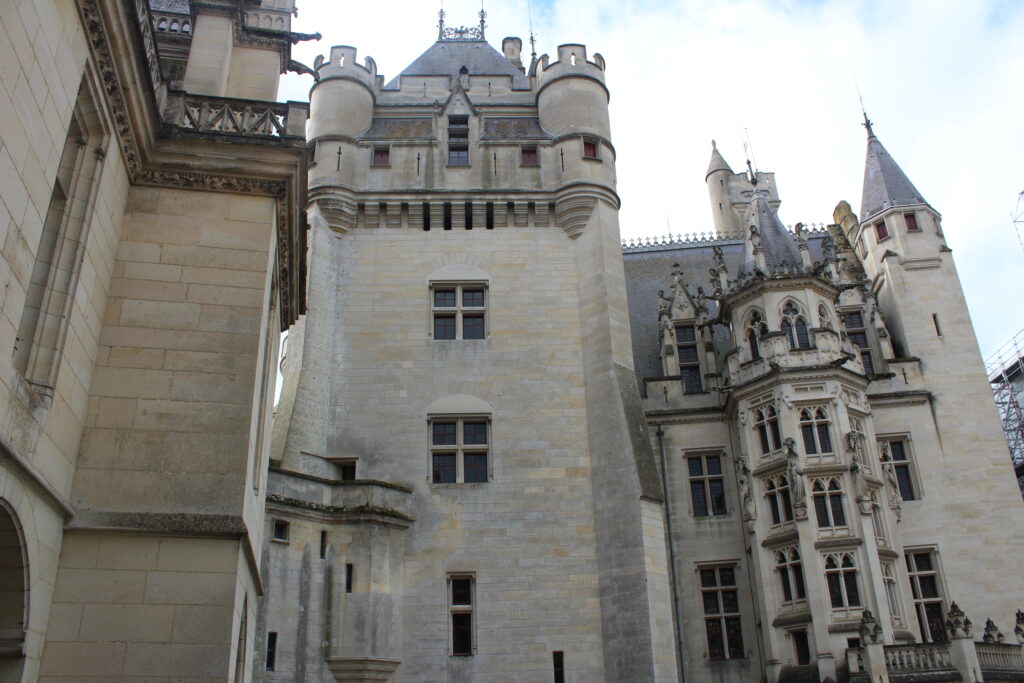I was raised on a steady diet of animated Disney movies. Which meant that as a child, I had a very specific idea of what a castle was supposed to look like. So imagine my dismay when as an adult, I discovered that the real thing was far from the cartoons of my childhood. Castles in reality are often dark, damp, and utilitarian. They are fortresses, designed to defend the land. Not look pretty. But there are exceptions. Castles that somehow manage to be both practical and beautiful. And then there’s the Château de Pierrefonds, which is in a category all of its own.
A Fortress of the Middles Ages
The Château de Pierrefonds was originally built in 1397 by Duke Louis of Orléans. It was a fortress, built to protect the Duke’s control of trade between Burgundy and Flanders. The castle stood for over 200 years, but the early 17th century brought about its ruin. This was because King Louis XIII came to power in 1610 at the age of eight. As a result, the first decade of his reign was wracked with instability, including his mother’s unpopular regency, several uprisings of the French nobility, and the outbreak of the Thirty Years War.
At the time, Château de Pierrefonds was under the ownership of François-Annibal d’Estrées, one of the French nobles who rebelled against the young king. When the rebellion failed, Louis XIII ordered the castle to be destroyed. The facade was removed, the towers were dismantled, and the roof was torn down. Château de Pierrefonds was to lie in ruins for another 200 years.
Viollet-le-Duc Reinvents the Middle Ages
It was Napoléon Bonaparte who bought the ruined castle in 1810, but he never did anything to improve its condition. Instead, it was Napoléon III who finally restored the Château de Pierrefonds to its former glory. To do so, he enlisted the help of the architect Eugène Emmanuel Viollet-le-Duc. For anyone familiar with the history of Notre Dame Cathedral, that name will ring a bell. Viollet-le-Duc famously restored Notre Dame in the 19th century, but infamously not to its original state. No, Viollet-le-Duc had a habit of “restoring” buildings to what he thought they should look like. Not what they actually looked like.
This was exactly the fate that befell Pierrefonds. During his restoration, Viollet-le-Duc created an idealized vision of the Middle Ages, often reinventing what the castle looked like. And when Napoléon III decided that Pierrefonds would be used as an Imperial Palace, the restoration project grew substantially in scope. However, this never came to pass. Napoléon III never lived at the castle and Viollet-le-Duc never saw his restoration finished. It continued for many years after his death, finally finishing in 1885. By this point, the Château de Pierrefonds had already become a public museum.

A Beautiful Day in Pierrefonds
I will admit that Pierrefonds is not the easiest village to access. Especially if you don’t have a car. But if you do manage to make the journey, I assure you it will be worth it. Viollet-le-Duc’s reinvention means that the Château de Pierrefonds of today is something straight out of a movie. Indeed, countless films and television shows have been filmed there over the years. It’s that picturesque. It also sits on a hill overlooking the incredibly scenic commune of Pierrefonds, complete with a town centre sitting on a lake. Everything about this village could be a movie set.
Today, the Château de Pierrefonds is managed by the Centre for National Monuments, meaning my visit was part of my ongoing mission to visit all of the national monuments in France. But mission or no mission, everyone should visit the Château de Pierrefonds. Especially those of us raised on Disney castles.
Laura Moore is a professional storyteller who loves history and the many stories that make Paris one of the most fascinating cities in the world. Join one of her signature tours to learn the story of a city.




